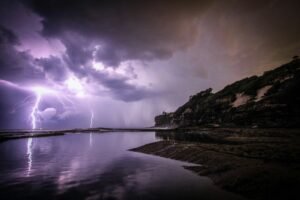World-building is the art of crafting vivid, immersive worlds that draw people into your narrative—whether it’s in a novel, a brand story, or your personal journey. It’s a skill that transcends storytelling genres, enriching your audience’s experience by creating an immersive world that feels real and alive.
Why World-Building Matters
World-building is more than just a backdrop; it shapes narratives, influences decisions, and connects deeply with emotions. A well-crafted world adds layers of depth and meaning, making your story—or your goals—more relatable and memorable.
For example, J.R.R. Tolkien’s Middle-earth isn’t just a setting; it’s a character in itself, shaping every aspect of the narrative. Similarly, when building your personal or professional story, creating a vivid world ensures that your audience is engaged and invested.
Elements of World-Building
Geography and Setting
A setting’s physical features affect every aspect of its inhabitants and story. Consider how terrain, weather, and natural resources shape culture and challenges. For instance, in Frank Herbert’s Dune, the harsh desert of Arrakis influences every facet of its society, from survival tactics to spiritual beliefs.
Culture and Society
Social norms, traditions, and hierarchies bring your world to life. Think about political systems, beliefs, and daily interactions. Margaret Atwood’s The Handmaid’s Tale uses a dystopian society with strict social structures to frame its gripping narrative.
History and Lore
A rich backstory provides depth and context. Whether it’s ancient wars or influential figures, history anchors your world. In George R.R. Martin’s A Song of Ice and Fire, the layered histories of the Seven Kingdoms give the story its complexity and intrigue.
Techniques for Effective World-Building
Consistency and Detail
Maintain a coherent set of rules that govern your world. Consistency builds trust and immersion. For instance, J.K. Rowling’s magical universe in Harry Potter has clear, consistent rules that make its fantastical elements believable.
Seamless Integration
Let your world emerge naturally through actions, dialogue, and description. Avoid overwhelming your audience with information. Ursula K. Le Guin’s Earthsea series reveals its world through the protagonist’s journey, creating a sense of discovery.
Overcoming Challenges
Balancing detail with narrative flow is crucial. Too much information can slow down the story, while too little can leave your audience disconnected. Keep a “world-building bible” to maintain consistency and use it as a reference to avoid contradictions.
Applying World-Building to Your Journey
World-building isn’t limited to fiction—it’s a tool for shaping your life story, brand, or business. By crafting a clear vision of your “world,” you can connect more deeply with others, communicate your goals effectively, and navigate your journey with purpose.
Whether you’re crafting a sprawling fantasy realm, shaping your personal brand, or clarifying your life’s vision, world-building offers endless possibilities.



